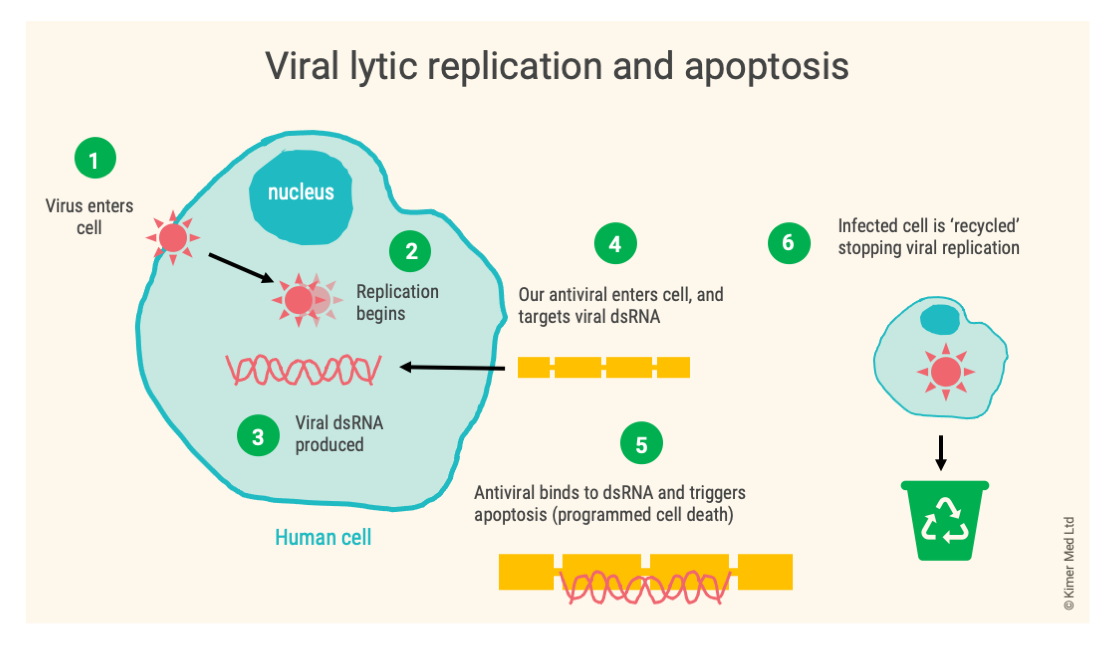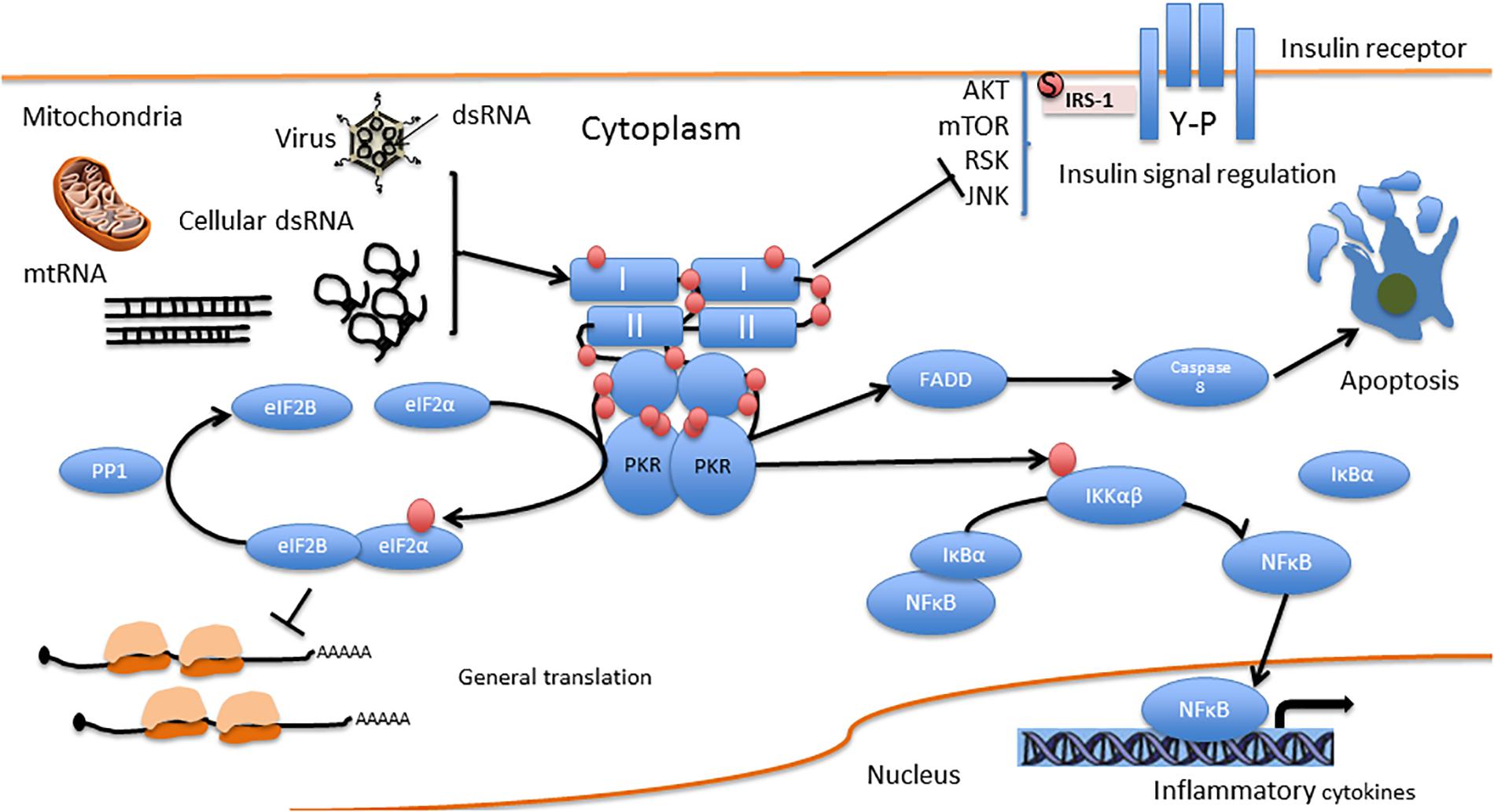Media Release: Nelson, New Zealand – 10 July 2024 – Kimer Med $10M closer to…
Understanding apoptosis: the natural process of cell self-destruction
Introduction:
Apoptosis is a natural and necessary process that occurs in the human body. It is sometimes referred to as “programmed cell death” which is a helpful way to understand it, because apoptosis is a highly regulated, orderly and controlled process that rids your body of unwanted, infected or damaged cells.
Apoptosis is very common. It’s estimated that about 5 out of every 1000 cells in the body undergo apoptosis every day. As the average adult human body contains around 13 trillion cells, this equates to around 70 billion cells.
Apoptosis involves a complex series of biochemical events that lead to changes in the cell – such as shrinking, blebbing and breaking apart. These changes ultimately result in the cell’s “recycling” and disposal. (Blebbing is related to words like ‘blob’ and ‘bubble’. It describes when parts of the cell break apart and form bulges in the cell’s outer membrane. These bulges can then separate from the cell, taking a portion of the cell’s contents with them.)
These biochemical events inside the cell are chain reactions, where each step in the process triggers another. While there are multiple pathways by which these processes can take place, they all lead to the same outcome – the orderly disposal of the cell and its contents.

The process of viral lytic replication within a human cell, and intervention with our antiviral, leading to apoptosis.
Why is apoptosis important?
Apoptosis plays an important role in maintaining a balanced and effective immune system by regulating immune cell numbers, eliminating infected cells, and resolving immune responses.
After an immune response, immune cells that are no longer needed undergo apoptosis to prevent an overactive or prolonged immune response. This prevents excessive tissue damage from ongoing inflammation.
Apoptosis plays a vital role in the elimination of infected or malfunctioning cells. When the immune system is working well, it can identify infected cells and tag them for disposal via apoptosis, helping to contain and prevent the spread of disease in the body.
Apoptosis vs. Necrosis
Necrosis is an uncontrolled form of cell death that typically occurs because of external factors, such as infection, traumatic injury, or a lack of blood supply.
You can think of apoptosis as a form of cellular “implosion,” whereas necrosis is a type of cellular “explosion.” In apoptosis, the cell effectively folds in on itself, forming small “blebs” or bubbles, which are then easily identified and absorbed by scavenger cells (macrophages). With necrosis, the cell’s membrane bursts open, and releases the cell’s contents into its surroundings. When that happens, the immune system recognises material that should be inside cells, such as DNA, as “danger signals,” which in turn triggers defensive mechanisms, such as inflammation.
Necrosis may also require some form of treatment, such as the removal of the dead cells and tissue. Injuries, such as cuts and scrapes, are a common and readily visible example of cell death via necrosis.
Both apoptosis and necrosis are processes that result in cell death, but as we’ve seen, there are fundamental differences in why they occur, and the overall outcome. Apoptosis is a normal part of a cell’s lifecycle; necrosis is not.
The role of apoptosis in antiviral therapies
Because of our work developing broad-spectrum antivirals, Kimer Med is interested in the role that apoptosis plays as part of the immune response in helping to control and combat viral infections.
All around the world, there’s an age-old and deadly battle taking place between viruses and immune systems. When immune systems are winning, apoptosis rids the body of infected cells. When the viruses are winning, cells burst open and are destroyed as they spew newly made virus particles into the surrounding area, where they can infect new cells. As a result, sickness ensues.
Viruses can evolve to evade the immune system. Many viruses, especially RNA viruses like Influenza and HIV, have high mutation rates. Those mutations allow viruses to make many, many attempts to work around cellular defences. New proteins produced that way may interfere with the immune system in such a way that they have an evolutionary advantage (natural selection). When that happens, the immune system may struggle to recognise and target those new variants.
These mechanisms of immune evasion contribute to the persistence and adaptability of many viruses, and is a key factor in the ongoing challenges of managing viral infections and developing effective antivirals and vaccines.
How our antivirals bolster the innate immune system
One of the advantages of our antiviral’s mechanism of action (how it works) is that it can bypass viral defence mechanisms by short-cutting the process of apoptosis. Since a defence against this mechanism would require viral mutations to effectively solve more than one biochemical “problem” at a time, this makes our approach more resistant to being bypassed.
Once our compound enters a virally infected cell, it targets long strands of dsRNA, produced as part of the viral replication process. This is important, because by selectively targeting only viral dsRNA, healthy cells within the body are not affected.
After our antivirals bind with the long strands of viral dsRNA, a molecule called Apaf-1 is activated. Apaf-1 (short for ‘Apoptotic protease activating factor-1’) is a key link in the biochemical process of apoptosis, and this activation triggers the cell to carry on the chain of events that leads to its orderly disposal. This prevents the virus from continuing its lytic replication – a process that leads to necrosis and the viral content of the cell being further spread throughout the body (i.e. infection).
You can see some of the pathways and processes involved in apoptosis in the diagram below. Note the pathway from PKR biding to FADD, to Caspase 8, leading to apoptosis.



